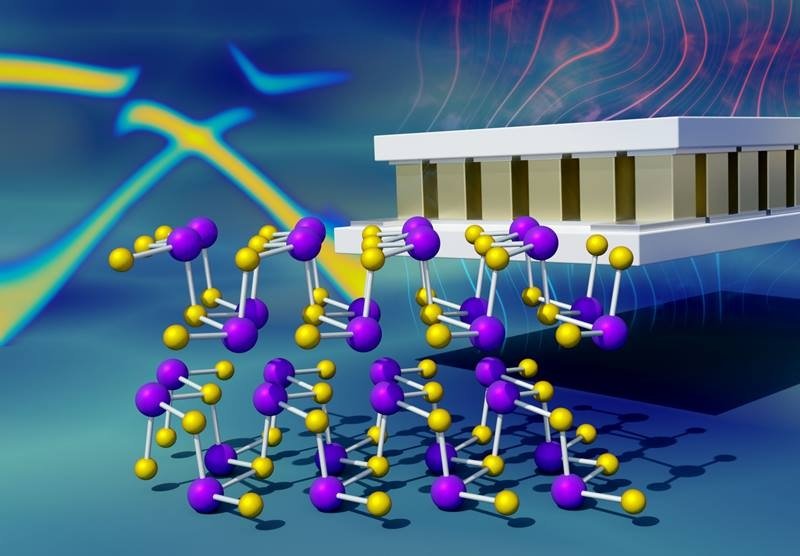| Sep 03, 2022 |
Uncovering the atomic mechanism underpinning heat transport in thermoelectric materials
(Nanowerk News) Thermoelectric devices convert thermal energy into electricity by generating a voltage from the difference in temperature between the hot and cold parts of a device.
|
|
To better understand how the conversion process occurs at the atomic scale, researchers used neutrons to study single crystals of tin sulfide and tin selenide. They measured changes that were dependent on temperature.
|
|
The measurements revealed a strong correlation between changes in the structure at certain temperatures and the frequency of atomic vibrations (phonons). This relationship affects how the materials conduct heat.
|
|
The research identified the temperatures ideal for the energy conversion. It also provided basic scientific knowledge that can help researchers design new materials for better thermoelectric performance.
|
|
The team reported their findings in (Nature Communications, "Extended anharmonic collapse of phonon dispersions in SnS and SnSe").
|
 |
| Neutron probes of the atomic structure and dynamics of tin-based thermoelectric materials unraveled the microscopic mechanism for their low thermal conductivity. (Image: Oak Ridge National Laboratory)
|
|
Thermoelectric materials are important for clean energy technologies. Using neutron scattering, researchers unveiled details of the phonon renormalization mechanism. This is the process in quantum mechanics that explains the very low thermal conductivity of two typical thermoelectric materials.
|
|
The results could enable researchers to design materials for more efficient thermoelectric devices. It will also help advance renewable energy conversion technologies.
|
|
Thermoelectrics convert thermal energy into electricity. They are among the mix of clean energy technologies that can mitigate the impact of climate change. One major challenge with thermoelectrics is their relatively low efficiencies and the limited number of available materials.
|
|
To design higher efficiency materials, scientists need a fundamental understanding of the mechanism enabling ultralow thermal conductivity. To address this longstanding scientific puzzle, researchers from Duke University employed neutron scattering experiments, complemented by other techniques, to probe the archetypical thermoelectric materials, tin (Sn) crystallized with sulfur (S) and selenium (Se) into binaries – SnS and SnSe.
|
|
By using the advanced neutron scattering instruments at the Spallation Neutron Source and High Flux Isotope Reactor, Department of Energy (DOE) user facilities at Oak Ridge National Laboratory, structural changes and phonon spectra were measured in a wide temperature range from 150 K to 1050 K, revealing a transition at 800 K where the atomic spacings expand in one direction but contract in others.
|
|
Measurement of the dynamics also provided key information on the dramatic reduction in the frequencies of atomic vibrations at the transition, which is responsible for the reduced heat conduction.
|
|
The work also suggests that the observed phonon behavior could be present in many other materials with similar phase transitions, such as halide perovskites, oxide ferroelectrics, or thermoelectrics near instabilities, significantly broadening the pool of possibilities for energy conversion materials.
|

